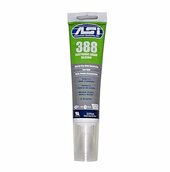Guys these are the standard "Lucas" pattern push fit connectors widely used in the auto industry for decades. However beware Chep Charlie, he makes these out of thinner metal so they dont maintain the spring force between blade and female socket.. Check your self to see the difference.
In principle these are very good but only go to 20A (6.3mm blade). However there is a 9.5mm blade version (yellow) but you can only get it in FEMALE. The industry only expected these to be used on equipment ie connecting a dynamo. Good for 40A maybe. I have a collection of these Ebay). Sorry not allow to mention here. I use the uninsulated crimp pair versions together with crimp/solder (at core tip - dont let it wick down the cable) then apply glue heatshrink. a silicon tube shroud can be fitted over the coupling with si grease. Pulls apart easily for occasional maintainance. Its old school and you can inspect it - unlike rubbish MC4s
But thats my 10c YMMV
The only thing I use these connections for is a low voltage ,low amperage system connections on the arrays…
These are very good quality connections…
how well you crimp ,install and maintain them can affect their longevity, performance and effectiveness ..( as in everything else you assemble)..
I have installed hundred on boats in a salt water environment for a living…without a single failure ..
If they are waterproofed , they work perfect… easily maintained, or unfasten and refastened or replaced if desired …. Different jobs requires different prep and technique..
On my solar I use the stripped bare 10 ga wire ends hardwired at the combiner box. All PV strings to combiner box are the same length. 8 FT.
The yellow connectors I use a 30a max rating , I typically aim for a half load for wires and connectors on everything I do when possible .
All of my series strings are 6 amps or 13 amp when they arrive and go into to parralell at the combiner box ,we’ll below the half load rating , as I said.
I don’t use these connectors past the combiner box….
The wires from the combiner to the system are 6 ga- 2 ga- 1/0 & 4/0…..they are lugged and crimped
The yellow connectors are rated at 600v while all of my arrays are only 70v to 100v…then reduced by the CC to supply a 24 volt system
When doing the voltage drop testing I do on each section’s connection it was basically non- existent at the array …they are excellent connections…
From the combiner box to the CC ( 1/0 cable) it does lose less than half of 1 % ( 0.5%) on the 65 ft run back to the CC area after being combined.
The array connection temps and all wires were all consistently very good…at full power .
Finally I like the fact that they are somewhat translucent…with a good light and pair of glasses..it’s easy to see a color change happening ….or see if corrosion is snooping around the connections..
I know many disagree , but I trust these far more than a mc4 …
But that’s just my opinion.J.



